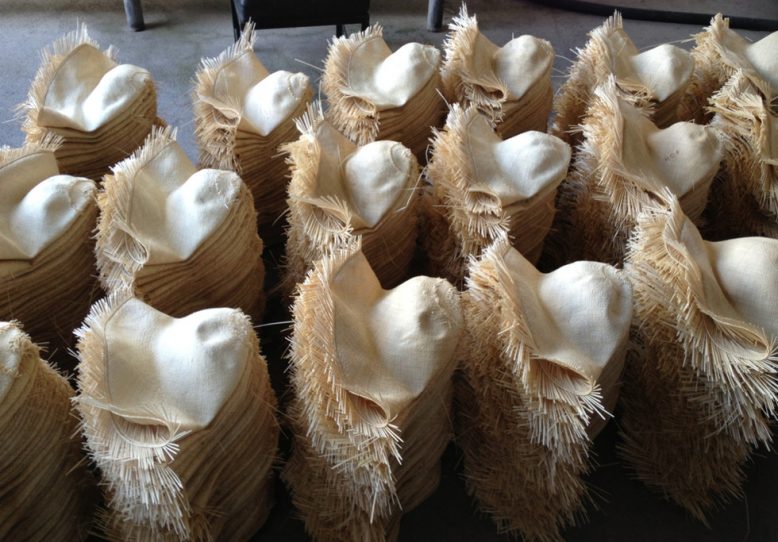It’s so amazing to learn more about the artisan techniques behind the things that we wear, it makes me appreciate the design and tradition embodied in piece so much more.
Wearing: Panama Hat, DIY shorts, Grana shirt, Leather sandals designed by me.
Particularly when it comes to an item like the Panama Hat, something you’ll know I wear so often you could think it was glued to the top of my head. It may as well be! (I think I have a problem… I need to join HA – Hats Anonymous). Visiting Ecuador, the land of the Panama Hat, and seeing up close how these beauties are made is on the absolute top of my bucket list, but for now, at least while I’m stuck at my desk doing taxes (argh!!), I thought it would be nice to share with you the technique, to whet your appetite a little. What can I say? I’m a sucker for a dose of craft and wanderlust all rolled into one. I hope you are too!
Contrary to their name, Panama hats are not made in Panama but originate from Ecuador in a village called Cuenca where the world’s Panama hat making industry has been located for centuries. The craftsmanship required to create a Panama hat is inspiring because it takes the work of half a dozen artisans to make a single hat, not to mention, everything is done by hand. It seems, just as it takes a village to raise a child, it also takes a village to make a Panama hat.
How Panama Hats are Made
1. Material: A Panama hat begins life as straw which is hand harvested, picked, cooked, dried and dyed from cogollos, the central leaf spikes of the Panama hat plant which grows in equatorial rainforests.
2. Crown & brim: The prepared straw is then taken to the weaver who starts by weaving four pieces of straw to form the centre of the crown (the top of the hat) and gradually adds more straw as he goes. Once the crown is complete, the weaver turns the weave down to create the sides of the hat and the brim. It’s back breaking work as the weaver holds the hat in place using a wood form and their own weight, leaning over and placing their chest on the wood as they weave down the sides of the hat.
3. Edging: The woven hat is then taken to a rematador who uses a back weave around the brim to prevent the straw from unravelling.
4. Tightening: The hat is then passed onto the azocador who tightens the back weave by slightly wetting the straw and going around the brim of the hat two or three times to tighten the straw. The azocador can not tighten the brim all at once because it can distort the hat and break the straw.
5. Trimming & Bleaching : A cotador is them responsible for trimming away and tidying up all the excess straw that is left by the weavers. The hat is then washed with soap and bleached with sulfur smoke to give it that iconically creamy Panama hat colour.
6. Softening: The bleached hats are then given to the apaleador who pounds the hats on a stone with a wooden mallet to soften the weave, sprinkling sulfur powder onto the hat as he does to continue whitening the straw.
7. Smoothing: The hat is then stretched over a mould and ironed by the planchador to get rid of any stretch in the weave and smooth out any problems.
8. Shaping: Finally, the hat is taken to a blocker who shapes and styles the hat to create the that iconic Panama hat shape that we all recognise. The hat is steam, moulded and dried repeatedly so that the hat will hold its form, then the inside sweat band and ribbon trims are sewn on by hand.
Phew guys! That’s one series process right there, something I’m in complete awe of. Doesn’t it make you appreciate these sorts of crafts once you know what goes into them?
You can read about the process in more detail here.
From this guy…. All the way to me travelling in Thailand. The world really is a small place these days isn’t it?
So excited to delve more into the world of traditional crafts! Are there any you’d like to know more about?
Click here to see more Traditional craft posts.
Photos by Nicola Lemmon, The Bespoke Traveller, Debra Eve, Atlas Obscura.




























